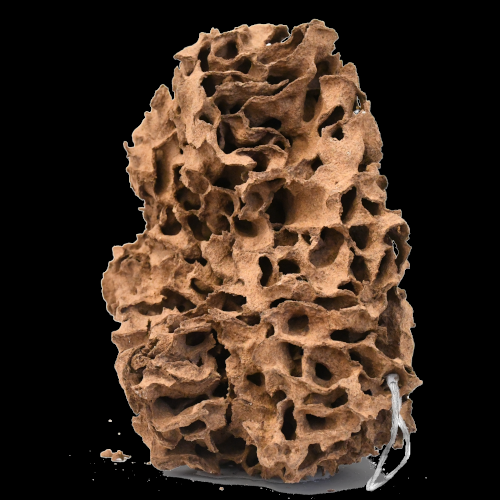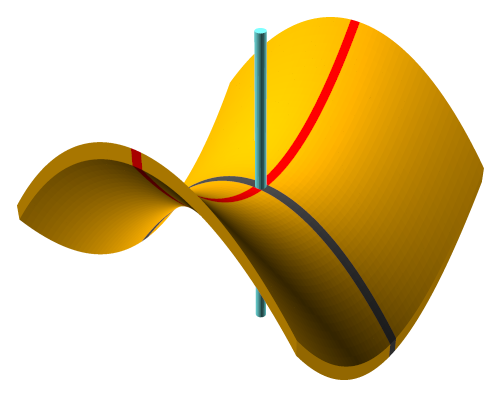The arboreal nests of Nasutitermes termites
The structure that you see below is a small fragment of termite nest, built by the Australian species Nasutitermes walkeri. Unlike the nest built by other species, these Nasutitermes nests present an apparently "chaotic" organisation, with new galleries that branch and open in every direction forming a large and complex maze. We don't know exactly how thousands of termites coordinate their activities to build such structures, but we know that much of the coordination between workers is mediated through the building substrate itself: each individual senses the local configuration of the nest and responds to it by depositing or removing a new pellet. This is a general coordination mechanism known as stygmergy.

An architecture of negative curvature
Observing these
Structures with negative curvature are relatively rare in human architecture, but they have a number of very interesting properties and include many “minimal surfaces”, such as the gyroid, which are known to offer good mechanical resistance for little weight.

A simple building rule
One of our hypotheses is that the local curvature of the surface is the main stigmergic stimulus that modulates the behaviour of termites: termites would have a high tendency to deposit new pellets wherever there is a region with high curvature, an unfinished wall, an edge, a pillar, while at the same time smoothing out smaller asperities.
Termites interact primarily with the substrate -rather than with other termites- when deciding where to add new pellets. In addition, the high density of worker termites inside the nest means that construction is not limited by the availability of workers. Because of this, we can almost ignore the behaviour of individual termites: we can model nest construction as a wall that grows by itself based on its local curvature!
The wall grows preferentially where its curvature is high, at the tip; if the tip also flattens while growing, the maximum of curvature is displaced to the sides of the tip and branching occurs. In three dimensions, a wall will branch to form a Y-shaped cylindre, whereas a pillar will produce a conical surface, that might later destabilise into several pillars.
Explore the structure in three dimensions
In the images below you can visualise a small fragment of Nasutitermes nests (on the left) and a gyroid (on the right).
Related scientific publications
- Facchini et al. "A growth model driven by curvature reproduces geometric features of arboreal termite nests". Journal of the Royal Society Interface (2020) [Web]